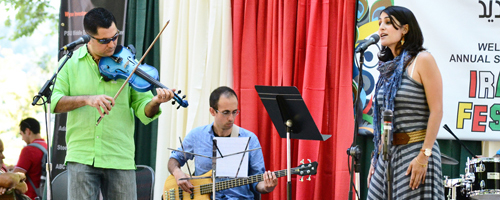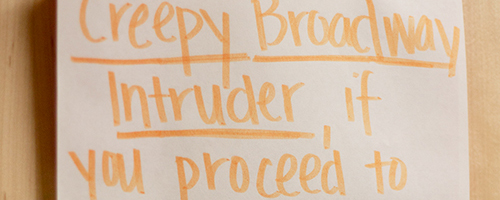The annual Pickathon Music Festival, which takes place at Pendarvis Farm in Happy Valley just southeast of Portland, has always prided itself on its diverse and unique musical collaborations.
In the US, a culture of violence
In Portland alone, over a thousand cases of domestic violence against women were recorded from January through June of this year. With continual cases of sexual assault, harassment and domestic violence being reported across the globe, a singular question arises: Is there a culture of violence against women in the United States?
“Yes, there is a culture of violence against women in the United States,” said Eric Mankowski, a psychology professor at Portland State whose projects have included studies on masculinity, mental health and men in court-mandated domestic violence intervention programs.
Mankowski believes that violence toward women is, on the whole, not the result of individual character traits, but rather the culmination of cultural forces. He echoed the common sentiment in academia that sexualized representations of women in the media contribute, in part, to widespread violence.
“It is not possible as an individual to live in this society and not develop sexist beliefs…at least to some extent. This is how oppression works,” Mankowski said.
Kathryn Farr, a professor emeritus of sociology at PSU who has studied violence against women and girls worldwide, agrees that oppression is both cultural and institutional.
“The culture in the United States models, encourages and legitimates male violence against women,” she said. Farr pointed to social institutions that she felt lend higher status to men—the family, the political system and religious organizations.
“[These] provide the structure for men to control women and women’s rights,” Farr said. “Women who challenge these controls…can thus be construed as legitimate victims of violence.”
A number of professors at Portland State pointed to the dangers of more implicit forms of violence that they say permeate American society.
“Clearly, most men do not rape, murder or beat women,” Farr said. “However…violence against women can be placed on a continuum.” Farr includes psychological abuse—along with physical violence—on that scale.
In Farr’s view, men and women who laugh at or overlook sexist jokes, for example, implicitly uphold cultural contributions to violence.
“Cultural content can be used to demean, humiliate and frighten women,” Farr said.
Rebecca Hannagan, a former visiting professor of political science who is a member of the research faculty at Northern Illinois University’s Center for the Study of Family Violence and Sexual Assault, agreed.
“Because the masculine ideal stands in opposition to the feminine, to be a failure as a man is equated with everything female,” Hannagan said. She explained that while the masculine ideal of strength, power and success looms large, most men struggle to conform to cultural expectations.
“Females become the butt of all jokes, reviled, and even feared or hated. When this translates into fearing or hating actual women, it can lead to violence.”
Hannagan was careful to evaluate peoples’ behavior as a side effect of both internal and environmental factors.
“In my research I typically take behavior as the result of both disposition and situation,” Hannagan said, explaining that while a number of cultural norms promote violence, some individuals would commit violent acts regardless.
“This makes studying gender-based violence challenging,” Hannagan said.
Hannagan, who has studied military rape extensively, finds similar dynamics at play in the civilian life and military, though she feels the military “amplifies” certain violent norms. Many women who have served in the military describe a hyper-masculine environment where sexual harassment is normalized.
Mankowski explained that while men are not responsible for systematic violence, they play a key role in breaking the cycle.
Professors seem to agree that notions of masculinity—not just femininity—play a key role in perpetuating a culture of violence. Cultural ideals of masculinity, many argue, contribute to a culture of violence.
“The culture of violence against women is also connected to the culture of violence among men,” Mankowski said. “And men’s violence toward themselves as well, in the forms of high rates of suicide and drug abuse.”
According to 2012 data published by the Centers for Disease Control and Prevention, “suicide among males is four times higher than among females and represents 79 percent of all U.S. suicides.”
“Many men feel disempowered or even victimized, but this is not due to their status as men, but due to ways in which they lose out in other systems of power—race, class, sexualities,” Mankowski said. “Men of color, gay men, disabled men, poor men…have differential access to this male privilege.”
Nicholas Newby, an officer with the Portland Police Bureau, weighed in on what he witnesses in his line of work. Based on his experiences, Newby sees violence toward women as linked to socioeconomic status.
“That is not to say; however, that domestic violence towards women does not occur in families or relationships that have reached a higher socio-economic success level,” Newby said.
Violence, he said, is often passed down from generation to generation.
“Children from families in which domestic violence is present are exposed to this and seem to have a greater probability of acting out in the same fashion as they grow older and create new relationships,” Newby said.
According to a 2010 study published in the National Institute of Health’s Journal of Family Violence, children who are exposed to domestic violence are more likely to suffer from depression and engage in delinquency than non-exposed children.
At the end of the day, Hannagan sees gender roles as directly influencing the violence that many women have faced in their lives.
“It comes down to power and who holds it when we talk about gender,” Hannagan said. “Thus, [male perspectives] are as important to consider as feminist perspectives.”
This story concludes a three-part series exploring violence against women at Portland State.





